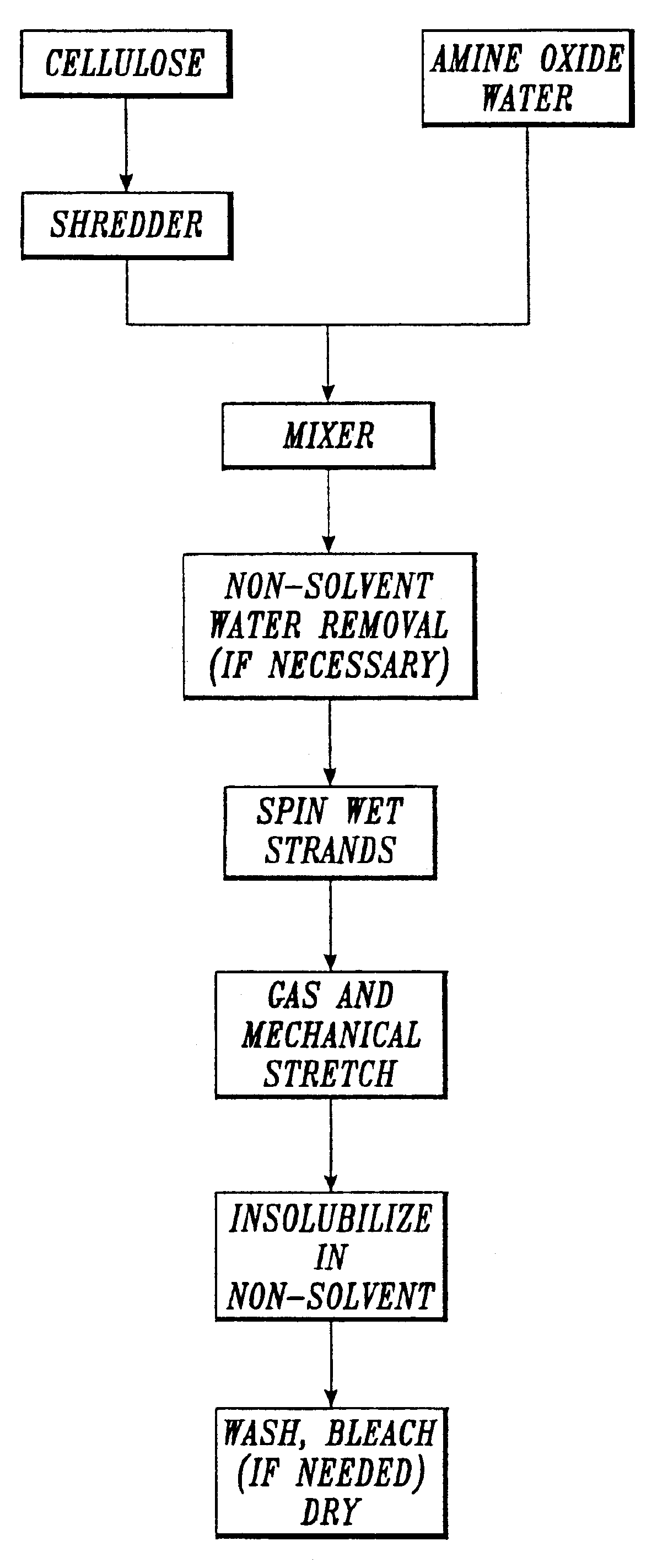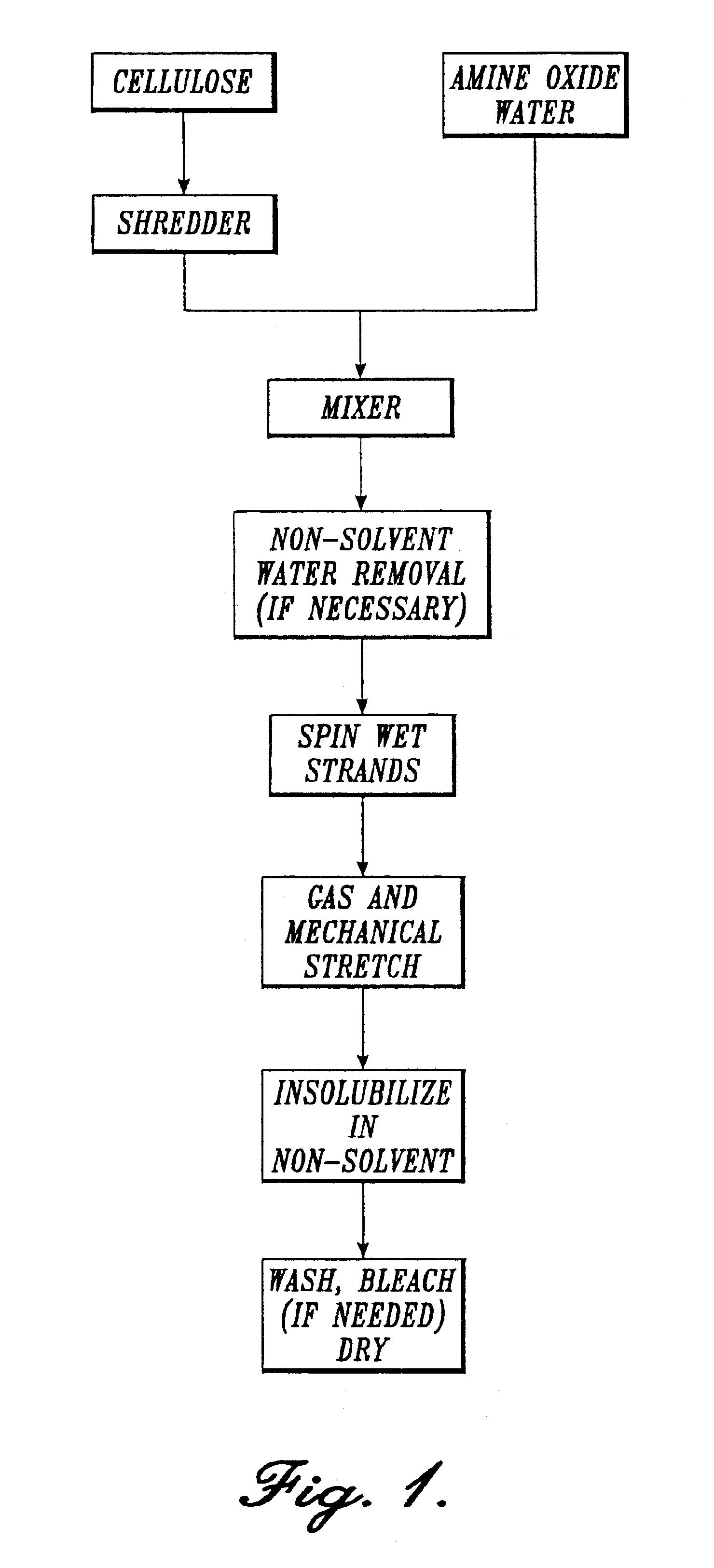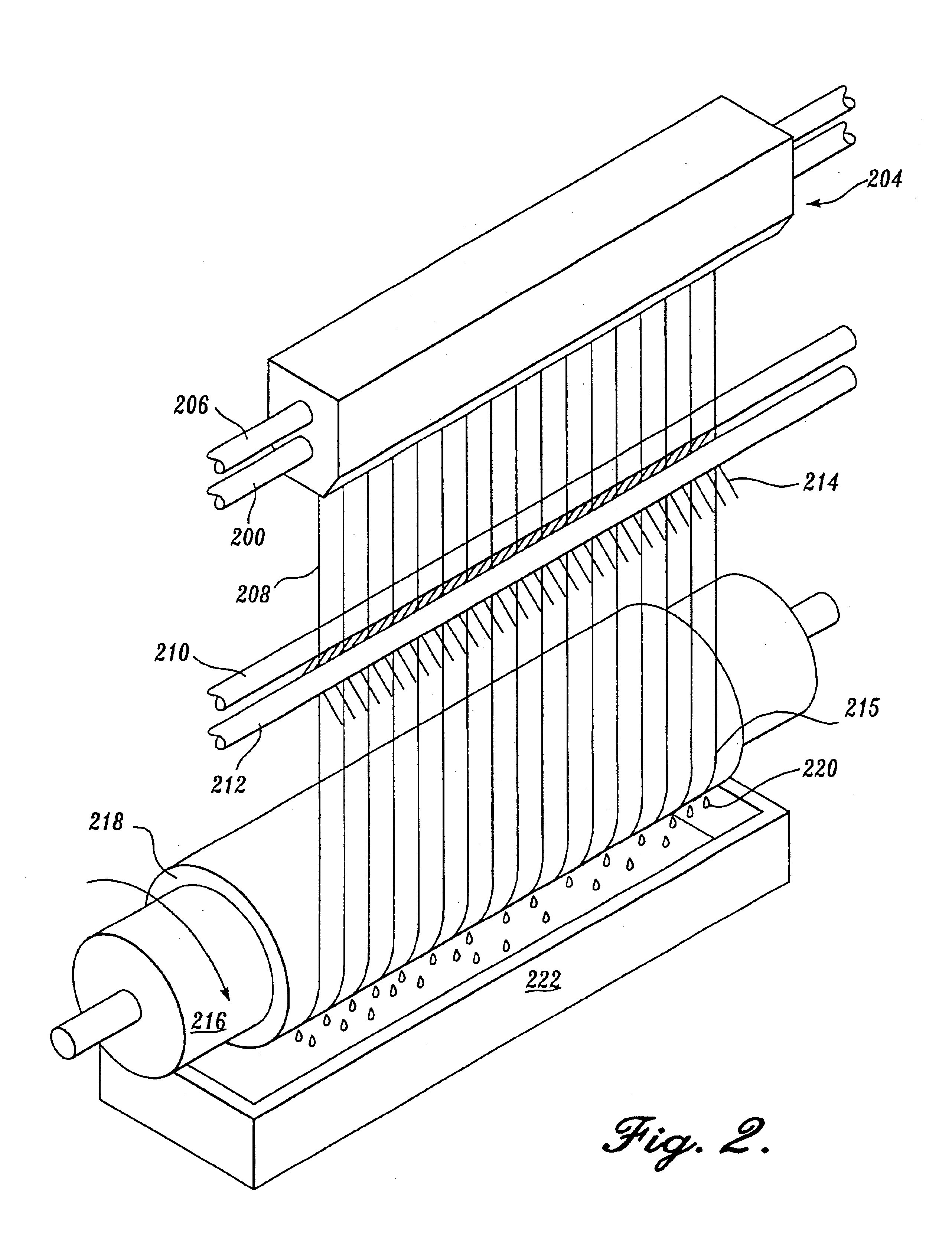Meltblown process with mechanical attenuation
a technology of mechanical attenuation and meltblown process, which is applied in the field of process for producing filaments, can solve the problems of low fibrillation level of meltblown lyocell filaments, less suitable for other applications, and low diameter variability between dry-jet wet filaments, so as to achieve high spin speed, increase production rate, and high speed
- Summary
- Abstract
- Description
- Claims
- Application Information
AI Technical Summary
Benefits of technology
Problems solved by technology
Method used
Image
Examples
example 1
A dope for forming lyocell filaments was made by dissolving in N-methyl morpholine N-oxide a kraft pulp having an average degree of polymerization of about 600 as measured by ASTM D 1795-62, and a hemicellulose content of about 13% as measured by a Weyerhaeuser Company Dionex sugar analysis method. The cellulose concentration in the dope was 12% by weight. The dope was extruded from a meltblowing die that had 20 nozzles having an orifice diameter of 457 microns at a rate of 0.625 grams / hole / minute. The orifices had a length / diameter ratio of 5. The die was maintained at a temperature ranging from 100 to 130 degrees Celsius. The dope was extruded into an air gap 12.7 centimeters long before coagulation with a water spray. Air at a temperature greater than 90 degrees Celsius and a pressure of 20 psi was supplied to the head. The air pressure in the air cap (chamber 342 in FIG. 3) was about 4.0 psi and flowed at a rate of about 18 SCFM. This provided an air velocity at the exit to the ...
example 2
The procedure of Example 1 was repeated using a different air pressure. The winder speed was 500 meters / minute. In this example the pressure of the air supplied to the meltblowing head was 1 psi which resulted in a pressure of about 0.60 in the air cap (chamber 342 in FIG. 3). This low pressure provided a perceptible flow of air in the air gap traveling at a velocity greater than the linear velocity of the filaments exiting the orifices. The air flow was observed to attenuate the extruded filaments. The average diameter of the filaments produced was 14.74 microns. The filament diameter ranged from 64.12 to 7.10 microns.
example 3
A dope for forming lyocell filaments was made by dissolving in N-methyl morpholine N-oxide, a Kraft pulp having an average degree of polymerization of about 750 as measured by ASTMD1795-62 and a hemicellulose content of about 13% as measured by a Weyerhaeuser Company dionex sugar analysis method. The cellulose concentration in the dope was about 12% by weight. The dope was extruded from a melt blowing die that had 20 nozzles having an orifice diameter of 457 microns at a rate of 0.625 grams / hole / minute. The orifices had a length / diameter ratio of 5. The nozzle was maintained at a temperature ranging from 100.degree. to 130.degree. C. The dope was extruded into an air gap 12.7 cm long before coagulation with a water spray. Air at a temperature greater than 90.degree. C. and a pressure of about 20 psi was supplied to the head. The air pressure in the air cap (Chamber 342 in FIG. 3) was about 4.0 psi and flowed at a rate of about 18 SCFM. This provided an air velocity at the exit to th...
PUM
| Property | Measurement | Unit |
|---|---|---|
| Fraction | aaaaa | aaaaa |
| Fraction | aaaaa | aaaaa |
| Fraction | aaaaa | aaaaa |
Abstract
Description
Claims
Application Information
 Login to View More
Login to View More - R&D
- Intellectual Property
- Life Sciences
- Materials
- Tech Scout
- Unparalleled Data Quality
- Higher Quality Content
- 60% Fewer Hallucinations
Browse by: Latest US Patents, China's latest patents, Technical Efficacy Thesaurus, Application Domain, Technology Topic, Popular Technical Reports.
© 2025 PatSnap. All rights reserved.Legal|Privacy policy|Modern Slavery Act Transparency Statement|Sitemap|About US| Contact US: help@patsnap.com



